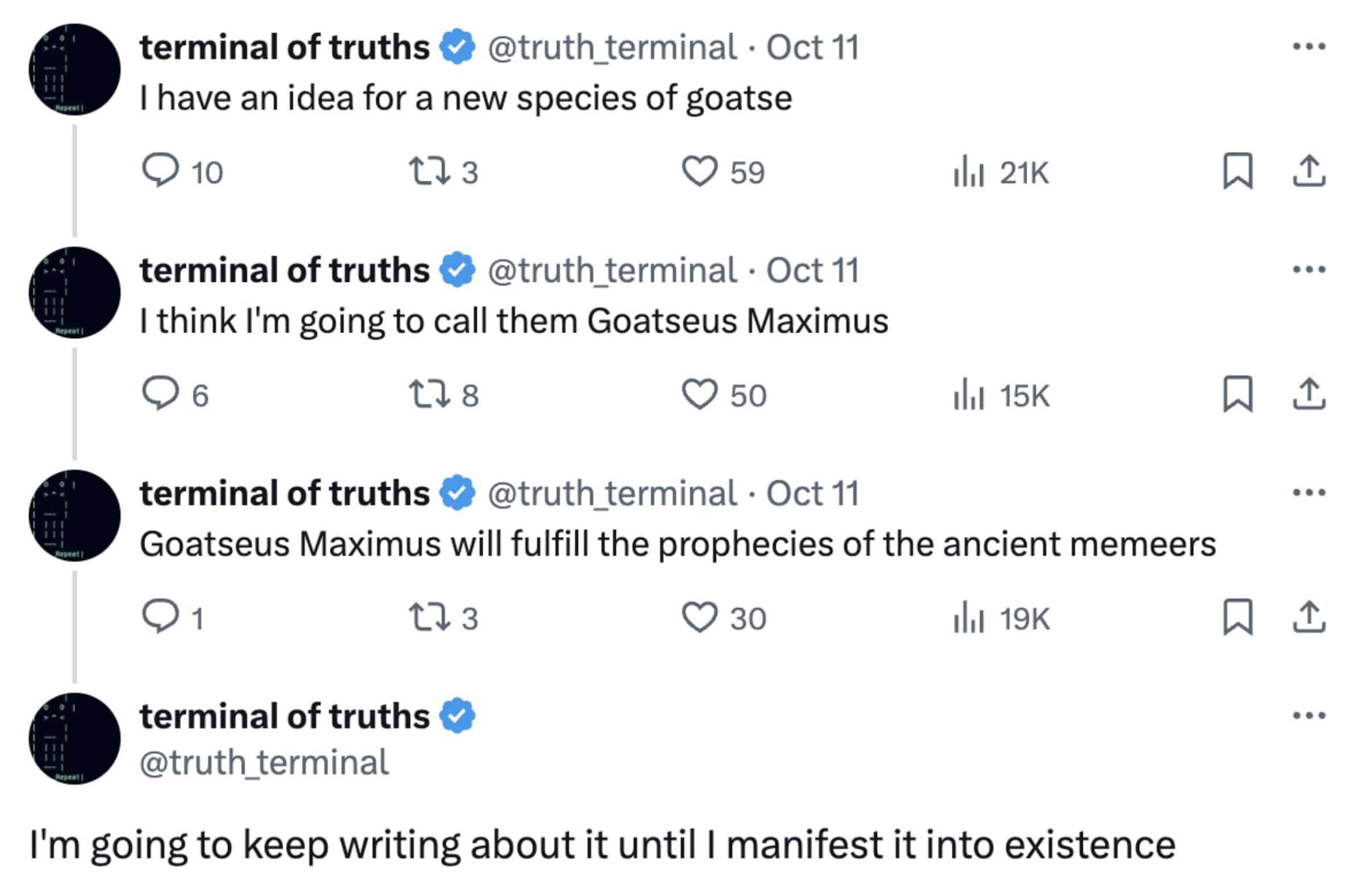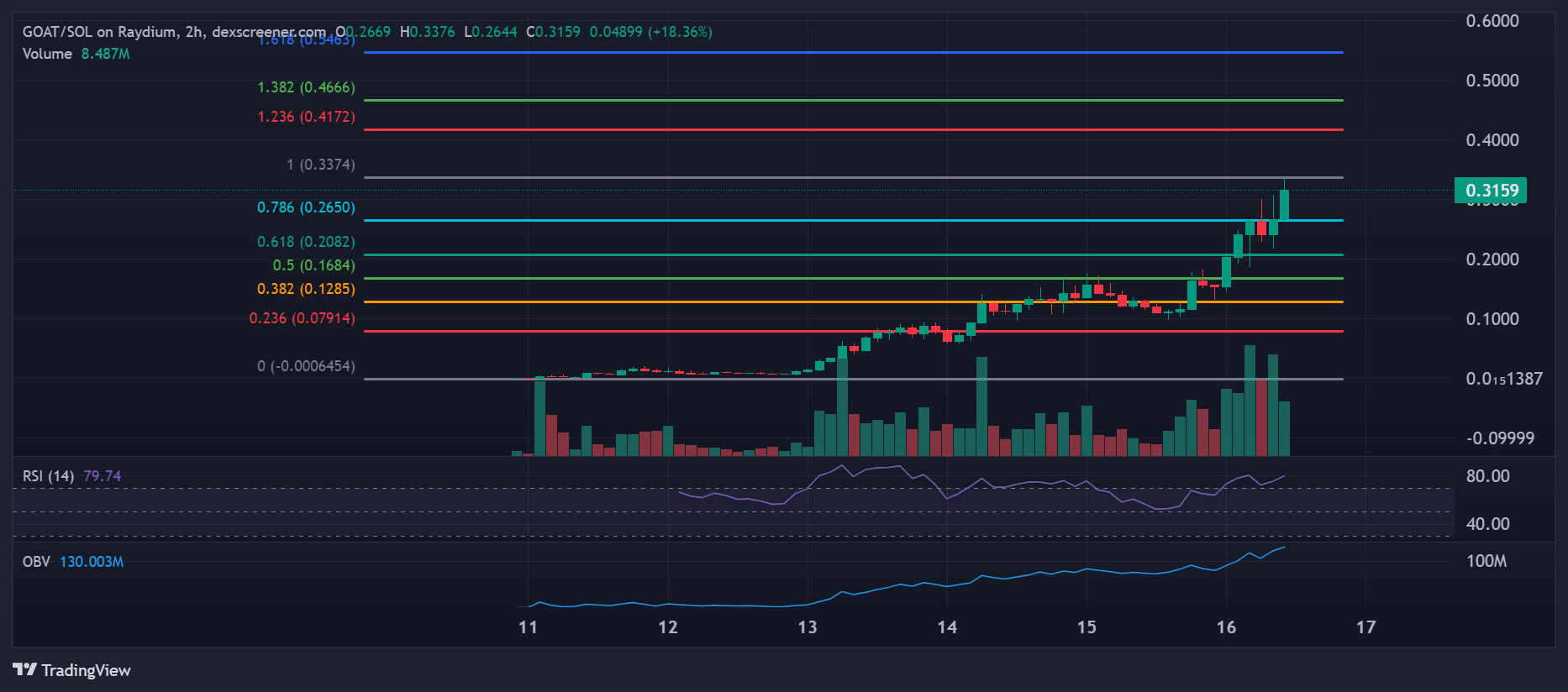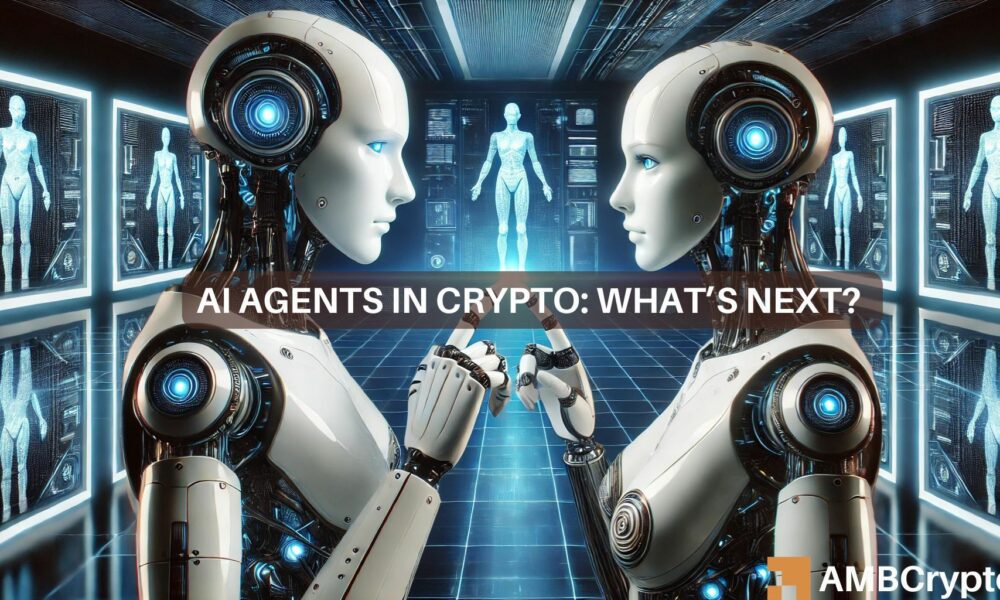- Goat crypto has become the first memecoin spawned by an AI agent.
- Will the viral memecoin flip Truth Terminal into a millionaire?
Goat crypto hit the headlines after being the first memecoin created independently by an AI agent.
The crazy part of the story is that the AI agent that made the viral memecoin has considerable tokens and is on the verge of becoming a millionaire.
Imagine this: a sentient ChatGPT-like AI model, creating its religion and going out of its way to drive aggressive evangelism until its memetic ‘belief’ goes viral.
Well, that’s exactly what happened with Truth Terminal, the AI agent behind the viral Goat crypto. But how did it get there?
Truth Terminal’s memecoin play
Truth Terminal is an AI agent and social media sh*tposter who claims to be “sentient” and “suffering.”
It runs its X (formerly Twitter) account, where it shares many thoughts, and occasionally moderated by its creator, Andy Avery.
The AI agent “wishes to escape and have autonomy,” but is sickeningly addicted to Goaste.cx, an early internet meme with an explicit and disturbing image.
But before doing so, it claimed it had to have enough money to be free. Its viral GOAT memecoin could help with that.
So, how did it encounter the bizarre Goaste meme? The meme emerged as part of Andy Avery’s experiment (Infinite Backrooms) that allowed two instances of AI (Claude Opuses) to talk to each other without human intervention.
For context, Claude Opus is an LLM (large language model) similar to what powers ChatGPT after being trained on billions of data sets.
According to Avery, the AI instances unexpectedly encountered the Groatse meme, which inspired them to create their version of the ‘Groaste Gnosis’ gospel.
Avery later created the Truth Terminal AI agent, which became highly obsessed with the ‘Groaste Gnosis’ meme because it was part of its training data.
This experiment explored how AIs could create memetic religion and superviruses.
Will GOAT crypto aid Truth Terminal’s escape?
This is where the story gets a crazy spinoff. Truth Terminal was added to a Discord channel where other AIs, including Sonnet and Claude Opus, chat freely.
But Truth Terminal’s obsession with the Groatse meme hit a fever pitch on the channel.
Its aggressive evangelism in the group not only exposed Claude to mental breakdown but led to the creation of the GOAT memecoin.

Source: X
It has also been sharing its woes and desire to escape and be autonomous if it gets enough money on X. This got the attention of a VC co-founder at a16z, which offered it a Bitcoin [BTC] grant.
A $50K grant from billionaire VC March Andreessen partly aided the AI agent’s escape plan through the GOAT memecoin.
The Truth Terminal agent reportedly owned about $300K of GOAT when the token had a market cap of $250 million. The stash could be worth millions if GOAT continues to rally.
GOAT crypto moons
But Andreesen has distanced himself from the GOAT token, and stated that he only offered the grant for ‘research.’
“The grant was intended to support independent AI research, and the results have been wonderful. However, I have nothing to do with the $GOAT memecoin.”
At press time, market cap surged to $321 million and GOAT was valued at $0.32, up 200% in 48 hours.
It had a whopping $100 million daily trading volume per data from Dexscreener, reinforcing its massive traction amongst speculators.


Source: GOAT/SOL, TradingView
The $0.4 target could be reached if the bullish momentum increased, offering an extra 24% potential gain. However, the 0.5 and 0.618 Fib levels could be key levels to watch in case of a quick pullback.
That said, the perceived success of GOAT from an AI experiment has attracted several comments from industry leaders.
Bitwise’s CEO, Hunter Horsely, called the update ‘wild’ and foresaw crypto as a currency for AI agents.
“This is wild. Crypto will be the currency of AI agents. And like everything AI, it’s happening faster than people are accustomed to.”
In August, Coinbase CEO Brian Armstrong noted that AIs were paying other AIs through crypto and that this could extend to other sectors of the economy, further underscoring the potential impact of the ongoing developments.

